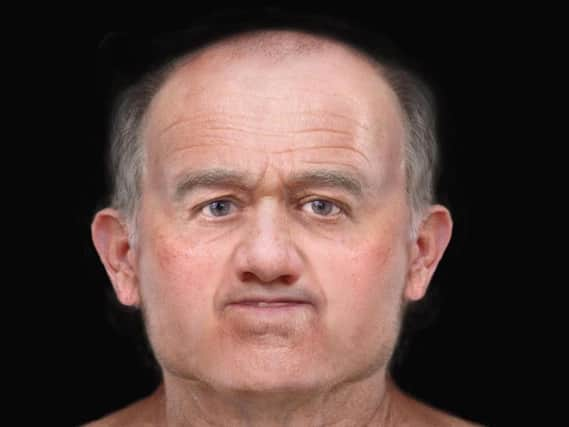Face of 600-year-old Medieval Scot with terrible teeth recreated


The man - also known as Skeleton 125 - was among 60 entire skeletons and 4272 bone parts found in Aberdeen as redevelopment of the city's art gallery got underway.
He has now been reconstructed by experts at AOC Archaeology Group, who were called in to examine the site after the first bones were recovered.
Advertisement
Hide AdAdvertisement
Hide AdAt 5ft 2ins tall, he was shorter than the average male during the later medieval period.
He suffered from extensive dental disease, including tooth loss, periodontal disease, cavities and a chronic abscess.
Dr Paula Milburn of AOC Archaeology Group explained: “SK 125 has provided us with a first fascinating glimpse of one of the people buried on the site of Aberdeen Art Gallery over 600 years ago.
"The on-going post-excavation work is examining the remains in detail and will provide us with amazing information on the kind of people buried here, including their ages, gender, health and lifestyles.”
Dr Milburn added that the man displayed the effects of age, with degenerative joint disease observed in the middle and lower back.
She added: "Fascinatingly, sulphur isotope data – which can reveal residence later in life – indicates that he may have spent the last years of his life in or around Aberdeen.”
Councillor Marie Boulton, Aberdeen City Council’s cultural spokeswoman, said: “The incredible find on the site and the amazing painstaking research of Dr Milburn and her team is another wonderful chapter in the history of Aberdeen Art Gallery which enters its latest phase with the much-anticipated re-opening on 2 November”.
The Art Gallery was built in 1885 on the site of the former Blackfriars Dominican Friary, believed to have been founded between AD1222–1249.
Advertisement
Hide AdAdvertisement
Hide AdThe friary and its church, dedicated to St John the Baptist, were destroyed by reformers in AD1560.
Excavations outside the Gallery uncovered a red brick charnel house containing three Victorian coffins, holding a mass of disarticulated human remains. Inside the Gallery excavations revealed in situ burials including the 60 skeletons and the remainder of the human bones.
SK125 was recovered from the lowest level of the burials, with other skeletons dated to the period 1050 to 1410.
Of the 60 skeletons, 56 were adults, one an adolescent (13 years) and three were children of six, eight and 11 years of age.
Of the adult skeletons, 26 were male and six were female, and they ranged in age from 18 to 25 through to 46 years and older. The remains provided evidence of a strenuous, physically active lifestyle with high rates of dental disease.
In addition to the skeletal remains abundant artefacts including dress accessories, personal ornaments, and coffin wood and fittings were recovered. Animal bones and fragments of pottery and glass tell us about wider activities.
Aberdeen Art Gallery re-opens on Saturday 2 November with all seven thousand six hundred free tickets snapped up for the opening weekend. From Monday 4 November no tickets are required.